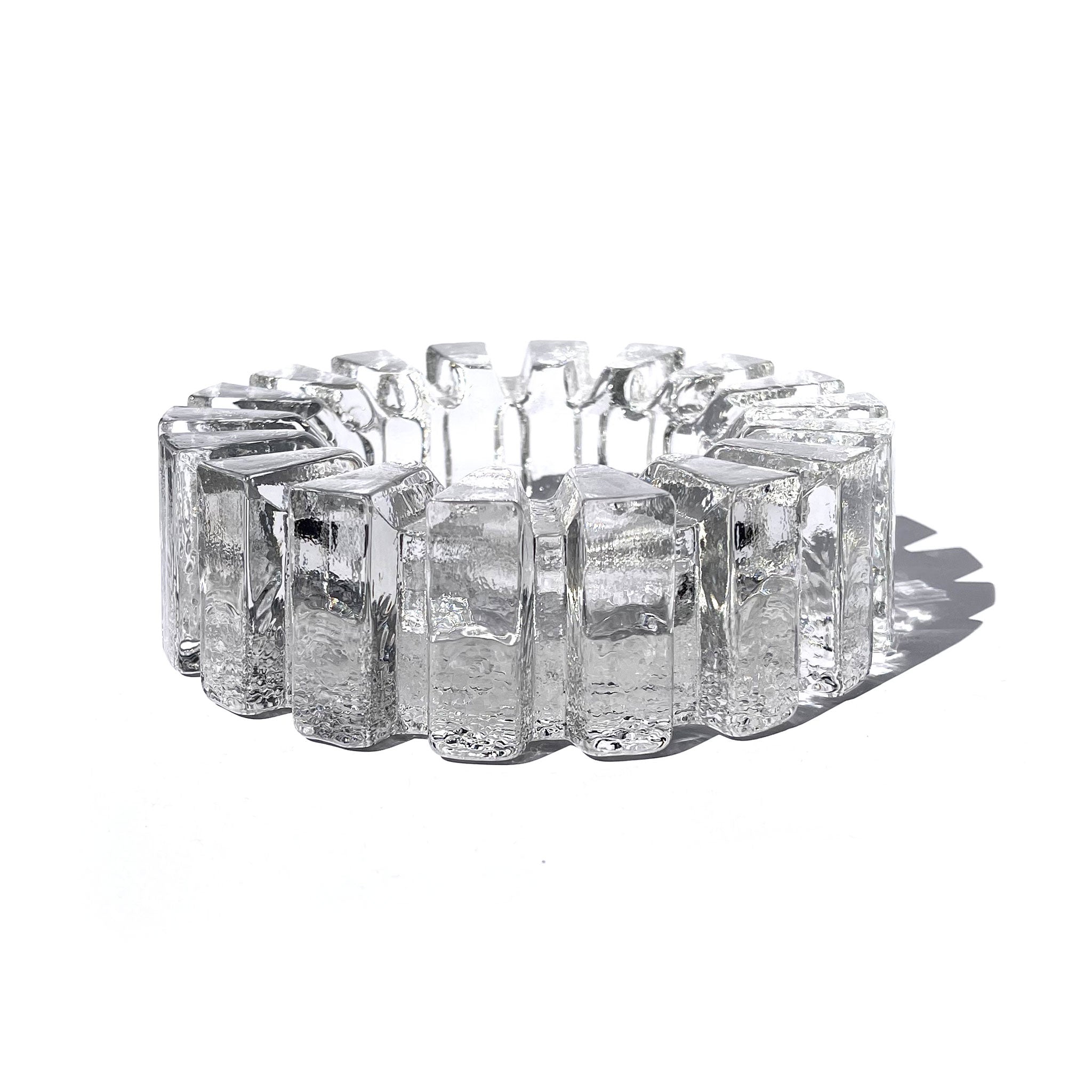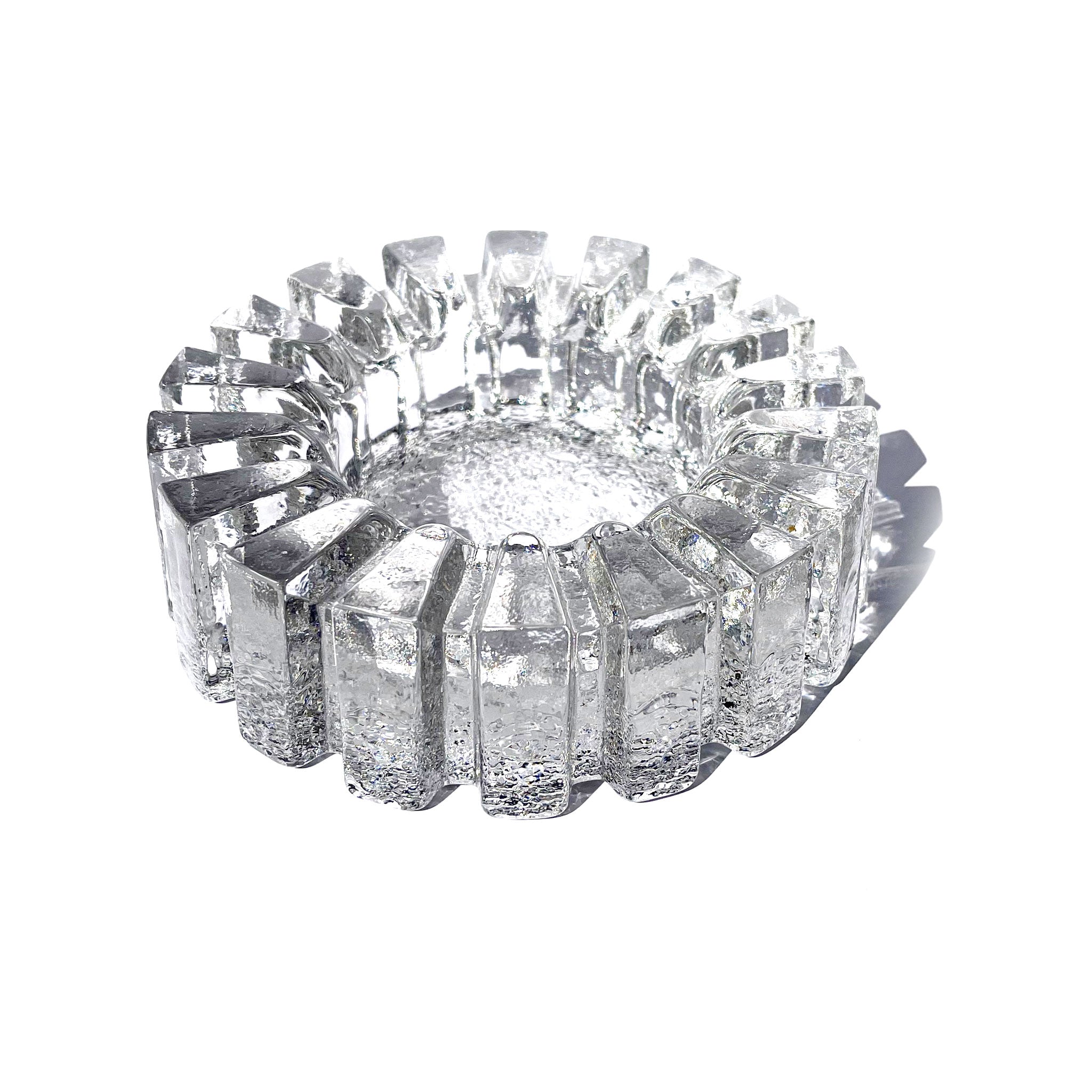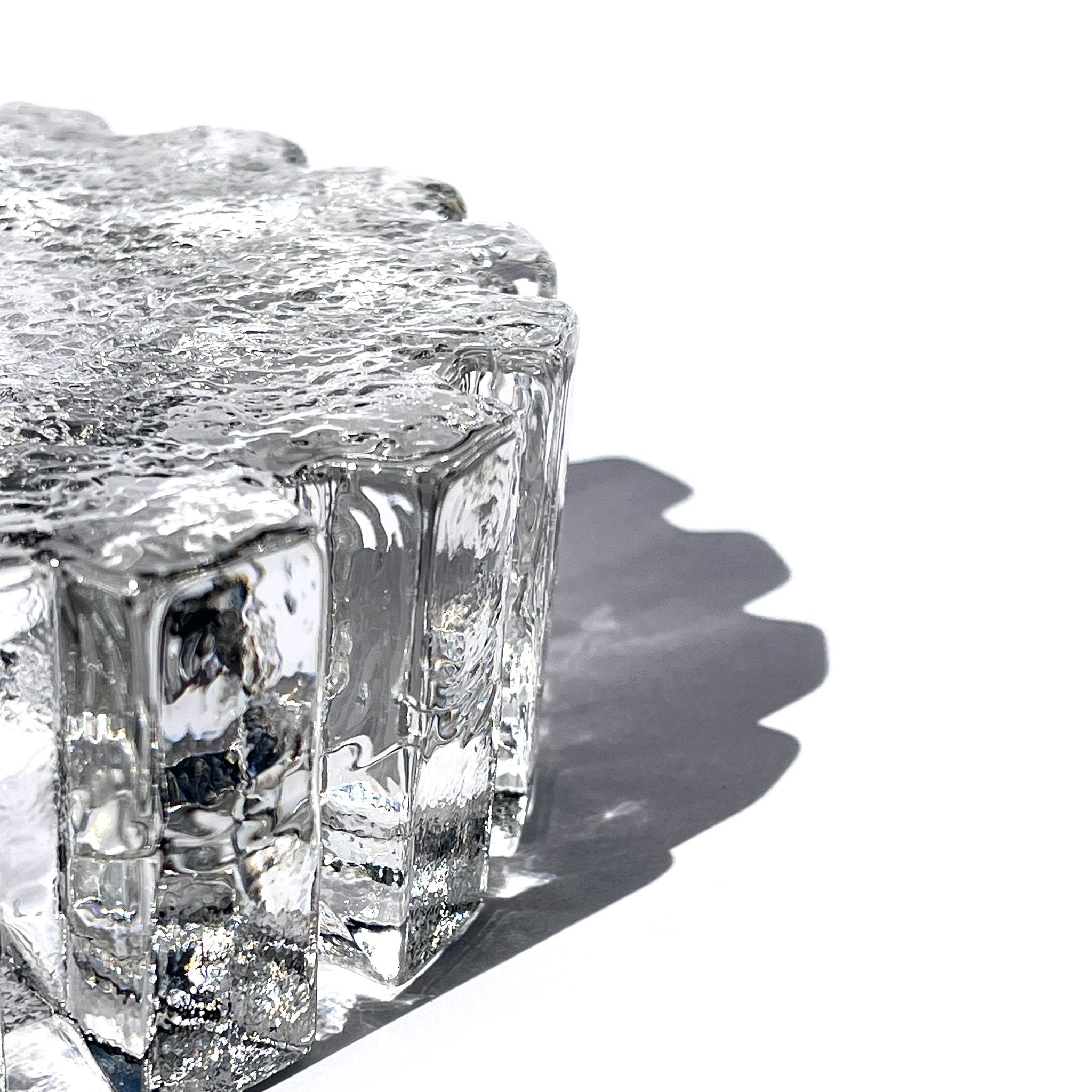Ice-textured glass tray, Pukeberg, Sweden, 1960s.
An elegant and massive expression of Scandinavian glassmaking from the 1960s, produced by Pukeberg Glasbruk in Sweden. Cast in clear glass, its textured surface evokes the fractured patterns of frozen water — a defining motif of the “ice glass” movement that swept Nordic design in the 1960a and 70s.
Combining sculptural texture with functional restraint, the piece reveals its character in the play of light and shadow, offering a quiet presence on a side table, entryway console, or modernist bookshelf. Whether used to hold keys, jewelry, or left empty as an objet of visual interest, it invites tactile engagement and quiet contemplation.
A collectible object that brings a sense of calm structure and organic geometry into contemporary interiors.
OBJECT SPECIFICATIONS
PRODUCT: Ice-textured glass tray / catchall / ashtray
MANUFACTURER: Pukeberg Glasbruk
ORIGIN: Sweden
PERIOD: 1960s
MATERIAL & TECHNIQUE: Pressed glass with ice-like texture
COLOR: Clear
TEXTURE: Crystalline surface with frozen relief texture
CONDITION: Excellent condition
DIMENSIONS: (+-) Diameter: 16.5 cm; Height: 5 cm


